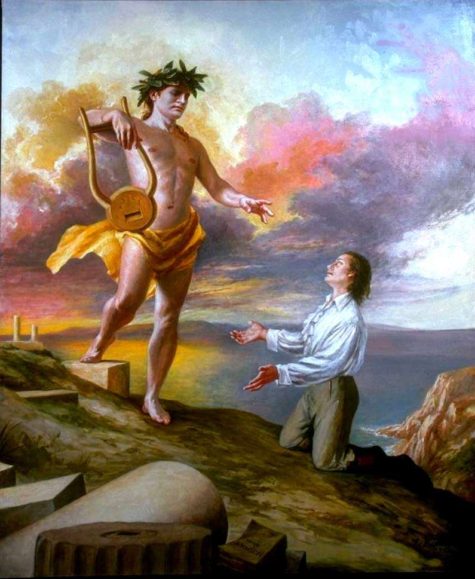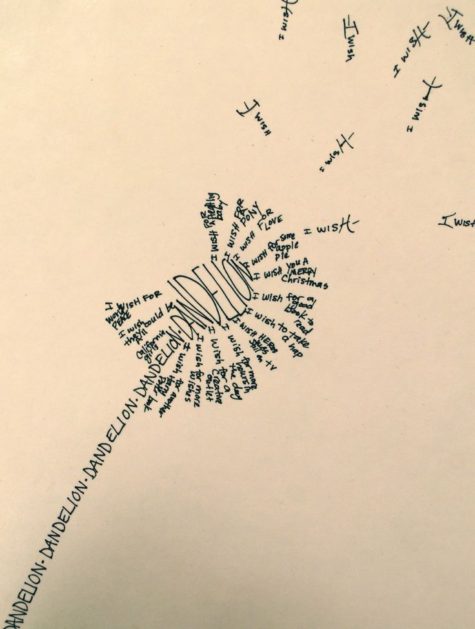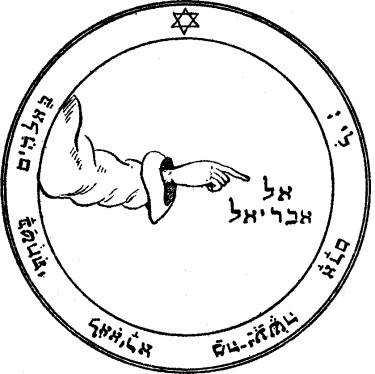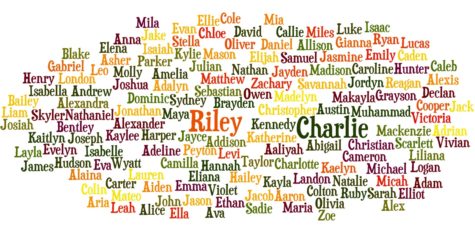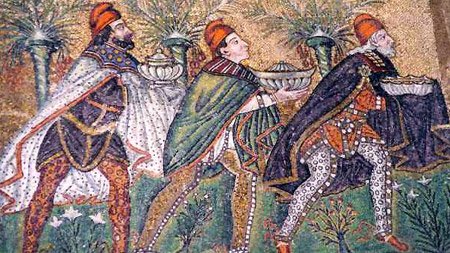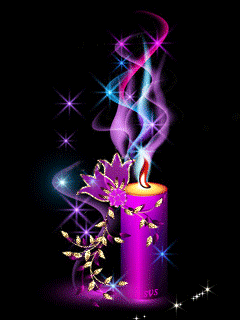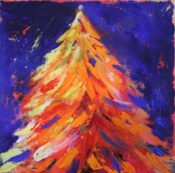shirleytwofeathers
Three Mothers Tarot Divination
The Three Mothers (Maiden, Mother, Crone) are not just symbols of the cycles of growth upon the Earth, they also represent phases we physically go through, cycles of events within our lives.
Sometimes we are uncertain as to where we actually are in a cycle of events. This can be frustrating and depressing. We may have to endure until the completion of the cycle, but it’s comforting to have some idea of where you are in that cycle. If you are observant, wise enough to seek guidance, and willing to make changes, however painful, you can often shorten the cycle.
This divination ritual (which uses tarot cards) is best done during the waxing or Full Moon, but in a pinch can be performed any time. If performed during a Crescent Moon, it will predominantly point out the root beginnings of the cycle, possibly what started the events in motion. The Full Moon will tell you how the events went, or will go, during the height of the happenings. The Dark Moon reveals the outcome or ending of the cycle.
Spread a nice cloth on a table where you can sit and spread out your tarot cards. Light a white candle on each side of your working area. Burn a good divination incense. If you use charcoal and a burner, add mugwort to the incense. Sit for a few moments with the tarot cards in your hands. Breathe out all negatives, and breathe in positive energies.
Shuffle the cards three, six, or nine times, while thinking strongly about the cycle of events you wish clarified. Six and nine are multiples of three and therefore powerful. Divide the deck into three piles from left to right. Tap each pile three times with your fingers and chant:
One for the Maiden, free as the air;
One for the Mother, lovely and fair;
One for the Wise One, in her dark hall;
Harken, Great Ladies! Listen to my call.
Turn up the top card on the left-hand pile. Think carefully about it, as this card represents what set the cycle in motion. Turn up the top card on the center pile; this symbolizes the full-blown activity of the cycle. Turn up the top card on the right-hand pile; this is the ending, the winding down of the cycle. From these three cards you should be able to determine where you are in the cycle of events.
If you feel you can endure through the rest of the cycle, you need do nothing further. If, however, you wish to change or end the cycle, you will need spiritual guidance as to which steps to take. In this case, turn up another card on each pile, moving from the left to the right. These revealed cards should give you clues as to what action, if any, to take.
It is a good idea to make a note of the cards you turned up, in their proper order. In this way you can think about the things you need to do or change, and refer back to it if you have questions, or as things begin to unfold.
From: Moon Magick
Apollo’s Grain Oracle
Although he is most famous as the solar-affiliated lord of medicine, music and prophesy, in the guise of his familiar, a mouse, Apollo also guards grain. Through this venue, he provides another oracle. Once upon a time, this system of divination, known as “aleuromancy,” was available if one made a donation at Apollo’s shrine. This ancestor of the fortune cookie, is easily reproduced at home.
Whether this oracle tastes good or is even completely baked depends entirely on whether you plan to eat the oracle once its answer is received.
Here’s how it works:
Make a very simple bread dough from approximately one cup of flour, one egg, and one quarter cup of water. Write your choices or alternatives on slips of paper. Place each within a ball of dough. Each ball must appear reasonably identical. Bake these balls so that they’re sufficiently hard. When they cool off, request Apollo’s blessings, then select a ball and an oracle. The oracles that are not chosen can be left outside in an area frequented by field mice as an offering and a thank you.
Adapted from: The Element Encyclopedia of 5000 Spells
Weather Divinations for Imbolc
Imbolc (Feb 2) was traditionally a time of weather divination, and the old tradition of watching to see if serpents or badgers came from their winter dens may be a forerunner to the North American Groundhog Day. A Scottish Gaelic proverb about the day is:
Thig an nathair as an toll
Là donn Brìde,
Ged robh trì troighean dhen t-sneachd
Air leac an làir.
“The serpent will come from the hole
On the brown Day of Bríde,
Though there should be three feet of snow
On the flat surface of the ground.”
Imbolc was believed to be the day the Cailleach — the hag of Gaelic tradition — gathers her firewood for the rest of the winter. Legend has it that if she wishes to make the winter last a good while longer, she will make sure the weather on Imbolc is bright and sunny, so she can gather plenty of firewood. Therefore, people would be relieved if Imbolc is a day of foul weather, as it means the Cailleach is asleep and winter is almost over and spring is on it’s way. Read more here: Là Fhèill Brìghde.
Other weather divinations include:
- “Red sky at night, sailor’s delight; red sky at morning, sailor take warning”. This weather rhyme is a quick way to remember that dry particles in the air causes the sky to look red. Dry air in the west (the night sky), the weather will be dry. If the sky is red in the east (morning sky), wet weather is headed your way.
- “Circle round the moon, rain or snow soon.” A “circle” around the moon indicates moisture in the air, bringing precipitation.
- Catch the cat cleaning it’s ear’s on Imbolc? Tradition says that this means a storm is coming.
- Check out the pine cones. If they are closed, it means wet weather is on it’s way. Open cones predict dry weather.
Crickets have been shown to be very good indicators of air temperature. Count the number of chips a cricket makes for 14 seconds. Add 40 and the sum of the two numbers will equal the temperature to within 1 degree 75% of the time.
From: Wikipedia and Examiner.com
Literomancy
I didn’t find much about this subject. Most of the links I followed shared the same information from wikipedia as I have shared below. My own thoughts on the subject are as follows:
This type of divination truly relies on the individuals abilities and confidence. If you’d like to try it, pay attention to the first words, ideas, thoughts, images and impressions that come to you as you look at the word or words. What do they say about the person, the situation… how does it feel when you think about it.
If nothing comes right away, you can ask yourself the following questions:
- If the word was an object, and I picked it up, how would it feel?
- Is it heavy or light? Bright or dull? Colorful or black and white?
- Is there a story associated with it? And if not why not? And if so, what would it be?
- If this word was an animal… how would it sound? Which animal would it be? What would it do?
Allow yourself to be open to any possibility, no matter how absurd or outrageous. Take notes and write down your impressions. Try to engage all of your senses. Sight, Taste, Smell, Sound, Touch … etc.
From wikipedia:
Literomancy, from the Latin litero, “letter”, mancy, “prophecy”, is a form of fortune-telling based on written words, or, in the case of Chinese, characters. A fortune-teller of this type is known as a literomancer.
When practicing literomancy, the client puts up a subject, be it a single character or a name. The literomancer then analyzes the subject, the client’s choice of subject or other information related to the subject, along with other information he sees in the client or that the client supplies to arrive at a divination.
Some literomancers can read the curves and lines of a signature as signed by an individual, just as a professional handwriting analyst might, but uses instinct and divination techniques rather than applied analysis skills.
Literomancy is practised in Chinese-speaking communities and known as cèzì (traditional Chinese: 測字; simplified Chinese: 测字). The subjects of a literomancy are traditionally single characters and the requestor’s name (Chinese believe that the name can affect one’s destiny). In modern times, elements such as foreign words or even more recently, e-mail addresses and instant message handles have come into use as a subject.
Notarikon
Notarikon (Hebrew: נוטריקון Noṭariqōn) is a method of deriving a word, by using each of its initial (Hebrew: ראשי תיבות) or final letters (סופי תיבות) to stand for another, to form a sentence or idea out of the words. Another variation uses the first and last letters, or the two middle letters of a word, in order to form another word. The word “notarikon” is borrowed from the Greek language (νοταρικόν)), and was derived from the Latin word “notarius” meaning “shorthand writer.”
Notarikon is one of the three ancient methods used by the Kabbalists (the other two are gematria and temurah) to rearrange words and sentences. These methods were used in order to derive the esoteric substratum and deeper spiritual meaning of the words in the Bible. Notarikon was also used in alchemy.
Here is an example:
First — write out your goal using as few words as possible; yet, keeping the focus clear. Here are a few examples:
- Answers come easily to me = ACETM if just using the first letter of each word.
- Psychic ability is my gift = PCAYISMYGT if using the first and last letters in each word.
- Wisdom is within me = DOISTHME if using the two middle letters in each word.
- I Understand What To Do = IUWTD if just using the first letter of each word
- The Path Ahead Becomes Clear = TEPHADBSCR if using the first and last letters in each word.
- Clarity Comes Quickly = AROMIC if using the two middle letters in each word.
The letters become a sigil of power that you can use in a variety of magickal applications. Only you know what the letters stand for; therefore, no one can destroy your intent with doubt. (Except you, of course.)
This type of sigil works well with other images. For example, you may wish to draw a circle around the letters and add pictures, other sigils such as an Ankh (life), a Pentacle (protection), or the Six-Rayed Star (manifestation). You may prefer to use appropriate colors in your design. Remember to write your full name on the reverse side of the talisman.
Your next step is to empower your Notarikon, and here are the guidelines (which of course, can be changed depending upon your training and your belief system):
- Always include and say aloud divinity during the activation.
- Always say aloud precisely what you desire and the power you are calling on.
- Always include and say aloud the element or elements pertaining to the request. (Example: By the Power of Great and Mighty Mars, Element of Fire…)
For example:
If you are a Pisces, or doing this ritual when the Sun or Moon is in Pisces, you can call upon the Spirit of the Universe (you can change this), by the power of Jupiter (which rules Pisces) and the element of Water. (Pisces’ element is water). Alternatively, you could call upon the power of The Invincible Sun and the element of Fire… etc. Think about this, and make it your own.
A Basic Ritual:
- Cleanse and create sacred space.
- Cast a circle if you like.
- Create your talisman.
- Bless it with a dab of holy water or oil.
- Call upon the Spirit of the Universe, by the power of (your choice) to: insert your desire here.
- As you do this, rub the talisman in your hands, then begin blowing on it softly, running the energy from the field of potential around you into the talisman.
- Rock back and forth if you like.
- Let the experience be free flowing.
- When you are finished (you’ve lost the thought), draw an equal-armed cross on the talisman to seal it and announce that it is sealed.
- Carry the talisman with you, place under a candle for further empowerment, or put in a conjuring bag until you desire has manifested.
- If you have called upon the element of water for assistance, when it is time to deactivate the talisman, put it under running water, see the light in your mind that is around the talisman dissipate, and then throw it away. For the element of fire, you might burn the talisman… etc.
Onomancy
Onomancy comes from the Greek onoma (name), and manteia (prophecy). Onomancy is an old-fashioned kind of fortune telling based on a person’s name. This form of divination was popular in the Late Middle Ages, usually following practices of Gematria (numerology). Earliest recorded use: 1603.
One theory suggests that the analogy between men’s names and their fortunes may have originated with Pythagoreanism.
There were two cardinal rules in the science of onomancy. The first concerned the vowels within a man’s name. If there was an even number in the name, then there was something amiss in his left side. If the vowel were uneven, this signified a similar affliction in his right side.
The second rule involved the numeral numbering of all the letters within a name. This rule was often used to predetermine the winner of two combatants. The person having the name in which the letters added up to the greater sum was always picked to be the winner. This was how Achilles was chosen to triumph over Hector.
The belief in a connection between luck and a person’s name is an old one. During the heyday of onomancy, a fortune teller might ascribe meaning to the number of vowels in your name or the total number of letters. It was also common to give each letter a number value, and to add up the total number of a person’s name.
It was also said that if three women with the same name sit at a table, one of them will be married within the year.
Some parents name their children after careful consideration of onomancy to ensure the best possible future for them. Some people alter the spelling of their names or adopt a new name in an effort to bring good fortune. Science fiction writer Isaac Asimov wrote a short story, “Spell My Name with an S”, with this theme. The story was inspired by his frustration in having to ask people to spell his name (pronounced AZ-uh-mof) correctly.
Here’s a link to a Onomancy word generator – Seimei Handan Generator. This generator is a system that analyzes the number of strokes in each letter of the name. Based on those numbers, it then displays the word that gives oneself the most impact. I found it interesting, and maybe it will give you some ideas of your own.
Dictiomancy
Dictiomancy is a form of divination by using a dictionary.The most common way to use this form of divination is to ask a question, or pose a situation or scenario, and then open the dictionary at random. The word on which one’s finger rests will have special applicability to the question posed.
This can also be done in a more definitive way by dividing your situation into three sections:
- Past
- Present
- Future
Or alternatively, you can ask questions such as:
- How did this happen?
- Why did this happen?
- What can I do about it?
- Where should I look for answers?
As with any form of divination, it is important to get centered and focused before asking the question. Be specific. Also, I would recommend writing the question down. This is very helpful, particularly when the answers given require some thought in order to figure them out.
If the word you receive makes no sense at all to you, try separating out the letters and making an anagram.
Epiphany and Twelfth Night Divinations
Epiphany or Twelfth Night falls on the 12th day of Christmas, Jan 5. Here are some old divinations and predictions for this night.
If a Danish girl wishes to see her future husband, she must repeat the following verse before going to bed on the eve of Epiphany: “Ye three holy kings to you I pray, That ye to-night will let me see, Whose cloth I shall spread, Whose bed I shall make, Whose name I shall bear, Whose bride I shall be.”
Here are some more:
- Whatever is dreamed during the twelfths will come to pass in the twelve months of the year.
- Those who wear linen made from yarn spun during the twelfths will be devoured by wolves.
- On twelfth-night in Scotland a board is covered with cow’s dung, candles set in it, and sprinkled with ash to make them light easily. They are then lighted, each being named for someone present, and as each dies, so will the life of the owner.
- The twelve days after Christmas make the almanac for the year.
- Tis thus believed in Trinity Bay, New Bedford, Mass., and Nova Scotia. In Nova Scotia it is said that the first seven days of January foretell the first seven months of the year.
Debbie: Reading Candle Wax
Bridget Grimes: 310112_svyatki2_500
Mari: Reading Candle Wax
Ali: Notarikon
ALI: Notarikon

